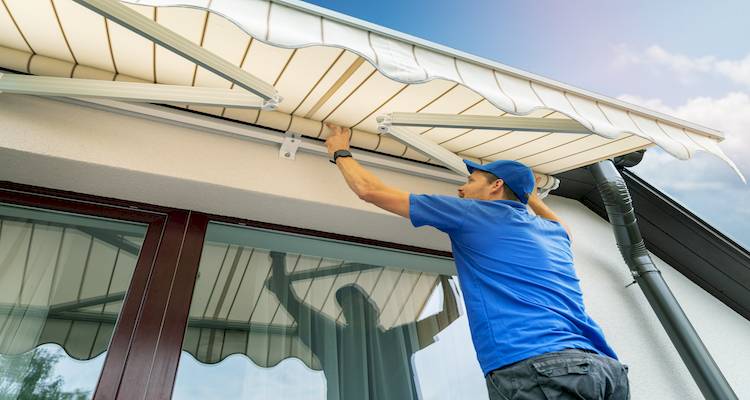Granny Annexe Cost
- Average cost to build a granny annexe is around £60,000.
- It will take approximately 7 to 8 weeks to complete.
- A pricing breakdown which includes types you can choose from, along with what such a task usually involves.
- How long building an annexe should take.
- How to find and hire a builder using MyJobQuote.
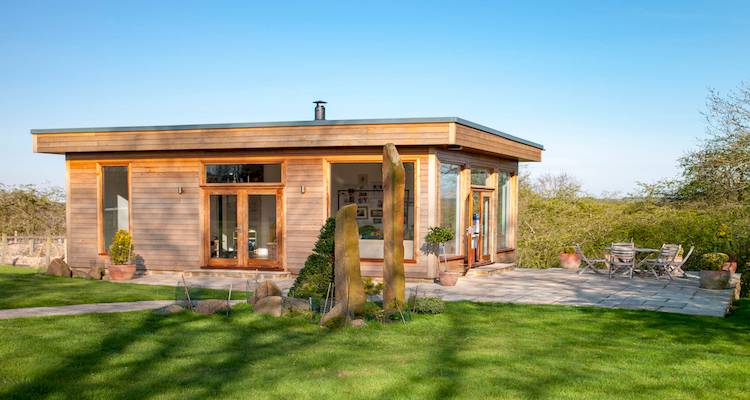
£60,000
Table of Contents
- How Much to Build a Granny Annexe?
- Supply Cost of a Granny Annexe
- Additional Granny Annexe Costs
- Labour Cost of Building a Granny Annexe
- Timescales for a New Annexe Building
- Factors That Impact Granny Annexe Building Costs
- What's Involved in Building a Granny Annexe?
- Building Regulations for a Granny Annexe
- Planning Permission for a Granny Annexe
- Types of Granny Annexe
- Checklist: Hiring a Builder for a New Granny Annexe
- FAQs
How Much to Build a Granny Annexe?
To give you some idea of what to expect in terms of average costs for such work, you will need to set aside anywhere between £60,000 - £100,000.
Multi-generational homes have become more common in recent years, either because of adult children living at home longer or because of older relatives requiring additional care.
If you've reached the point where you're concerned about the health and well-being of a loved one, you may be faced with the same decision. Building a granny annexe is the best way to keep them connected while still giving them independence.
If you would like to build a granny annexe with different contractors, you will need to budget for:
- An architect
- Someone to maintain compliance with Building Regulations
- Planning approval solutions
- Materials and labour
Many of these charges are bundled into a single package with prefabricated annexes. This can help save money, time, and stress.
A granny annexe is a self-contained dwelling with a bedroom, bathroom, kitchen, or living room. As a result, it's not a cheap project. You'll need to budget for both construction and furnishings and fittings. Most of the time, you can choose from a one-bedroom granny annexe or a two-bedroom granny annexe.
Of course, costs vary depending on the materials used, the opulence of your furnishings, the difficulty of installing any tools, how much space you have and whether you plan on converting space or constructing a granny flat from scratch.
There are no centrally funded ‘granny annexe grants’ that will cover building an entire annexe. However, the local Disabled Facilities Grants (DFGs) and other local schemes may help with adaptations if your annexe is being created specifically for a disabled or elderly person. See GOV.UK for DFG guidance.
So, what is the cost of building a granny annexe?
The average cost of constructing a new granny annexe is £60,000 - £120,000 while purchasing a granny annexe kit can range between £25,000 and £60,000. Prices depend on the specification and the location you live in.
Converting a part of your house is also an option. Having a garage conversion to create a granny annexe can cost between £7,500 - £20,000. A loft conversion can cost between £37,500 - £60,000, and a basement conversion can cost between £100,000 - £160,000.
Building regulations would cost an extra £200 - £500 on top of the overall cost, and utility diversions and works would cost £4,500 - £5,000.
Granny Annexe Cost Examples
| Job | Cost |
|---|---|
| Cost to build a granny annexe | £60,000 - £120,000 |
| Granny annexe kit | £25,000 - £60,000 |
| Garage conversion | £7,500 - £20,000 |
| Loft conversion | £37,500 - £60,000 |
| Building regulations | £200 - £500 |
| Utility diversion or works | £4,500 - £5,000 |
Supply Cost of a Granny Annexe
Saving money on labour is one way to bring down the cost of a granny annexe; however, the last thing you need is a dangerous and structurally unsound building.
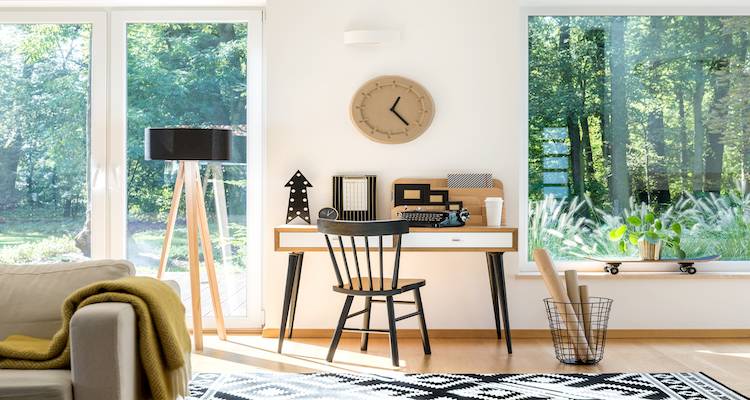
If you were to cut labour and build your granny annexe yourself, then this decision should largely be based on your level of expertise and experience, or if you already have the right contacts to help.
However, with the following supply only costs, you will find everything you need to know in order to estimate the supply only costs of building a granny annexe.
Planning Permission
In the UK, the cost of filing a planning application varies according to where you live. Although on average, a full request for a new single home or outline planning permission costs around £460.
Approval is required in order for the local authorities to confirm that the build is safe and meets any legal obligations.
Foundation and Base Materials
To begin, you will need to ensure that your granny annexe has a sturdy base to keep it secure. This will include the purchase of pressure-treated wooden posts, which range in price from £24 to £136, although you will need to check the size you require before purchasing.
Premixed concrete is also required for the base, costing between £6 and £13 a bag.
Windows and Doors
As part of the design, you will naturally include windows (costing around £129 to £400 each) and a door, for anything from £40 to £600.
Energy Supply
In order to set up an energy supply to your granny annexe, the price to arrange the property to be connected is around £1,600 to £2,000, although this can vary depending on your circumstances and the location of your property.
Plumbing Costs
Likewise, installing plumbing for a new home will cost approximately £13,000 to £15,000 (based on one master bedroom with en-suite bathroom).
This includes the time and effort required to construct additional plumbing throughout the property and connect it to main facilities as necessary.
Interior Fixtures and Fittings
Finally, you'll need to buy everything for within your granny annexe, including the painting and decorating, furniture, a shower and bathroom facilities, along with any other elements required once the physical structure of your annexe is complete.
Additional Granny Annexe Costs
There is much more to building a granny annexe than you think because you are building a mini house for a family member or friend. As a result, when having one built, you may discover many additional costs associated with building a granny annexe.
As a result, we've created this section, so you'll know what extra costs to consider when building your granny annexe.
New Bathroom Cost
The size of your bathroom and the quality of the finish you desire would have a massive impact on the cost of your bathroom renovation. Of course, the bigger your bathroom, the more work will be required, but if your bathroom has an awkward layout, this will also require more work.
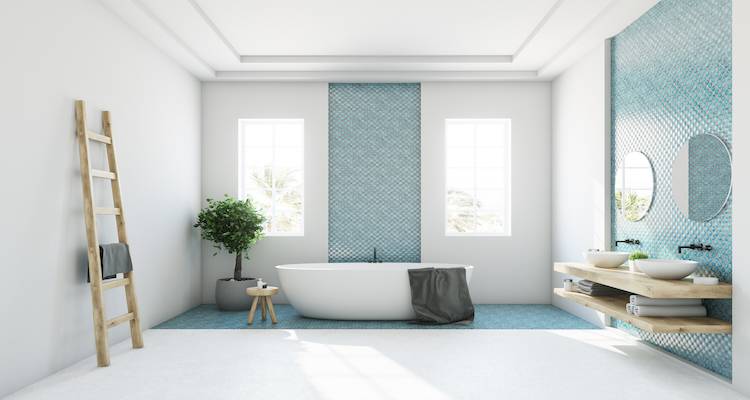
Though the fixtures themselves will consume a significant portion of your budget, labour fees may be the most expensive part of a new build, with the costing dependent on whether you have a small or large bathroom.
- Basic finish: £2,750
- Small bathroom: £5,000
- Medium bathroom: £7,000
- Premium finish: £7,000 or more
- Large bathroom: £10,000 or more
If you would like further information, please refer to our guide on the costs of installing a full bathroom.
Heating
Installing central heating is a large task that requires the installation of a boiler, new radiators, a water tank, and pipework. The average cost of installing central heating ranges between £3000 and £4000.
Everything involved is usually included in the total price quoted by your chosen central heating installer. Modern central heating systems are highly efficient and can use significantly less fuel than older systems while producing the same amount of heat.
If you would like further information, please refer to our guide on the costs of installing central heating.
New Kitchen Cost
A small kitchen will be installed in your granny annexe at an additional cost because a whole kitchen is fitted in the small home. A new kitchen's cost is divided into two parts: the kitchen itself and the installation.
Both costs can vary greatly depending on the size, complexity, and quality of the kitchen you choose to buy. Likewise, your location can significantly impact the cost of kitchen installation.
- Small Kitchen: £2,500 - £4,000
- Medium Kitchen: £4,000 - £5,500
- Large Kitchen: £5,500 - £10,000
Labour costs will also impact the final budget, although the size, design, materials and duration needed to complete the job will all impact the final cost.
If you would like further information, please refer to our guide on the costs of installing a new kitchen.
Plastering
Plastering is an important factor within any build, and costs may vary depending on the type of plaster you choose. Patch repair covers any damaged areas costing between £70 and £130, while a complete overskim is somewhere from £150 and £200.
As for the general plastering cost, this will also vary depending on room size:
- Small Room Plastering: £400 - £700
- Medium Room Plastering: £800 - £1,100
- Large Room Plastering: £1,200 - £1,500
If you would like further information, please refer to our guide on the costs of plastering an indoor wall.
Painting a Room
Painting a room is a simple task for any painter or decorator, and it is something that any DIY enthusiast can do. Of course, the price is almost entirely determined by the size of the room.

A standard 4m by 3m room would take a couple of days to paint, including any woodwork and coving. Most decorators charge around £150 to £200 per day, so your total labour cost would be around £300 to £400.
Plus you need to allow for material cost of the paint, which can vary depending on the quality and finish, but for the above sized room allow an average price of around £50.
If you would like further information, please refer to our guide on the costs of painting a bedroom.
Paint a House
In the UK, the average cost of painting a two-story, three-bedroom house is around £850. However, keep in mind that this is only an estimate, and many cost-variable factors will affect the final cost of your project.
This includes the size of your home, its design, the materials used, and the tradesperson's hourly and daily rates.
When you hire a professional painter or decorator to paint the exterior of your home, you usually pay for all materials, supplies, and labour. In most cases, you will need to erect scaffolding before having the exterior of your home painted.
If you would like further information, please refer to our guide on the costs of painting the exterior of a house.
Labour Cost of Building a Granny Annexe
You will almost certainly need the services of a builder for construction projects or structural work. We'll go over the labour costs for constructing a granny annexe without any supplies or extra fees.
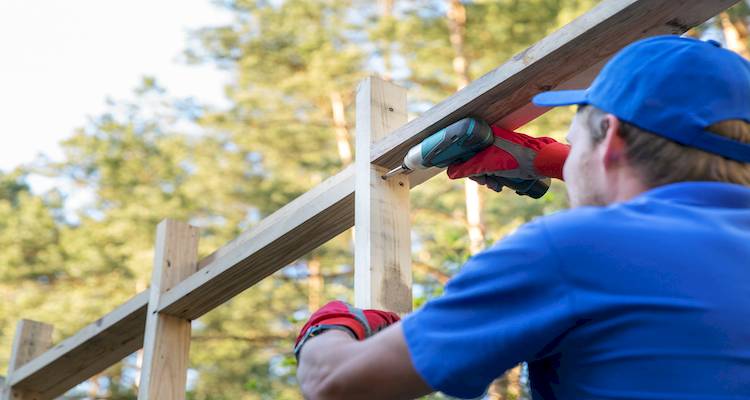
Tradesperson and Builder Costs
You should budget between £150 and £280 a day for a tradesperson to build your granny annexe. The individual's level of expertise will decide the exact fee you pay, the complexity of the project, and your location in the country.
Builder day rates, for example, are larger in London and the Southeast.
As with all professionals, getting at least three quotes from different builders in your area is recommended. You should shop around to make sure you're paying a fair and competitive cost for the project.
Plumber Costs
Depending on the extent of the plumbing required for the project, you may need to hire a plumber for the water and sewer work. Sinks, toilets, and other plumbing jobs that are hard to access or need disassembly and reassembly later will take longer and cost more.
Most plumbers cost between £20 and £40 per hour, but the total cost depends on the context of the job.
Electrician Costs
Lights and plug sockets will need to be installed around your granny annexe by an electrician. You should expect to pay between £280 and £450 for this service. However, we've received quotes as low as £150 per day for other jobs. So consider paying around £75 per hour for an electrician in London.
Timescales for a New Annexe Building
Moving on to the time required to construct a granny annexe. The decision to build an annexe is arguably the most difficult because it usually necessitates many members of your family to decide on how it will all function together.
The process is not one to rush into with financial considerations such as income tax, granny annexe council tax, operational costs, moving fees, and more.
When you've decided on a company to build your annexe with, you'll usually pay a deposit before proceeding to the next stage, which is the critical Planning Permission stage. A planning decision is usually made within 8 - 13 weeks, depending on the complexity of the case.
The following steps are the foundations and main service connections for your annexe. This process usually takes 1-2 weeks, based on where your home is located, the quantity of ground equipment needed, and the overall size of your annexe.
The average onsite build takes 7-14 weeks to finish, depending on the size and requirements of the annexe, from the installation of the frames, windows and doors, roof and cladding outside to the installation of the bathroom and kitchen, flooring, plumbing, electrical work, painting, and décor inside.
Factors That Impact Granny Annexe Building Costs
There are numerous cost factors to consider when building a granny annexe, and we will go over the various cost factors that may affect the overall cost of your granny annexe.

Location
Since the cost of hiring a builder varies by region, where you live has a significant financial impact. For example, the southeast, particularly London, has higher labour rates than the rest of the UK.
Duration
Because of labour costs, the more time you spend onsite, the more you will pay if labour is taxed per day. If the work took two days and three hours or six days, you would be charged three days of labour. The labour cost will not be impacted by the passage of time if a fixed price is settled ahead of time.
Size
The bigger the granny annexe, the higher the price when it comes to size. This is entirely normal. The bigger the room, the more materials and time required to build it. As a result, the granny annexe will be more expensive.
There are some additional expenses to consider. Many people fail to realise that building a larger granny annexe necessitates more use of screws, nails, and other equipment.
Form
The shape of your granny annexe will also affect the cost of construction. Garden rooms in unusual shapes, for instance, are typically more expensive. Other features, such as a walkway or pergola, can raise the cost of a garden room.
Planning Expenses
If you need Planning Permission to build your granny annexe, you will have to pay a processing fee of around £170. Normally, your provider would include drawings in the project's cost, and a small fee for the drawings and specifications may be charged. However, if Building Control consent is granted, there may be extra fees to pay.
If you'd like a free quote from a builder, MyJobQuote has many builders ready to give you a free quote for a granny annexe.
What's Involved in Building a Granny Annexe?
Building a granny annexe is a large project that includes selecting an annexe, arranging utilities, and planning the site on which the annexe will be built. This section will go over the processes required to install a granny annexe.
Step 1
First, you will contact a builder who will answer any queries you may have. A short meeting will also help improve the idea of what you're looking for and how they can assist you.
Step 2
Following initial contact, your builder will come to your home for an on-site consultation. During the consultation, they will evaluate your garden and its suitability for an annexe and walk you through the options.
Your advisor will go over the various styles of annexes available, the finishes available, and the planning permission process. In addition, budgets will be addressed so that they can better understand what you want to do.
Step 3
Following your consultation, they will create a detailed plan for your annexe and provide you with everything that you need to decide as well as proceed, including:
- The procedure for obtaining planning approval
- Warranty and construction guarantee
- Project timelines and expectations
- The annexe construction specifications
- Your annexe's complete footprint and elevation designs
- The fees for the building permit application
- A comprehensive cost breakdown
- Any additional costs for the additional effort
- The construction payment schedules
Step 4
As soon as contracts are signed, they begin applying for planning permission. The action from your Planning Authority will take between 8 and 13 weeks on average.
Step 5
You should have a point of contact throughout the process and ensure that you are always kept up to date. If you have any questions, you should contact your project manager.
Step 6
Seeing your annexe become a reality is the most exciting part. The tradespeople will be working in your garden, finishing groundwork, and arranging utility connections; your new annexe will be supplied and assembled once finished. After the finishing touches are applied, you will be able to move into your new home!
Building Regulations for a Granny Annexe
There are several building regulations a new annexe needs to comply with. These include:
- Thermal Performance (Part L)
- Ventilation (Part F)
- Fire Safety (Part B)
Your design must demonstrate compliance with these requirements to gain planning permission.
Planning Permission for a Granny Annexe
Obtaining planning permission for your new granny annexe will no doubt cause you to experience a range of emotions, as you consider if building an annexe in the backyard is the best option for you and your family.
There are several building regulations and licenses available. Some temporary structures, including those that are unoccupied and used for purely leisure activities, may not require planning permission.
Many annexes will, however, require planning permission, especially if they’re self-contained or could be considered a separate dwelling. So a granny annexe with a person living in it will always require planning approval or a Certificate of Lawfulness from your Local Planning Authority (LPA).
The Caravan Act allows you to apply to site a temporary structure on the land rather than develop it. This isn't applying for planning permission; however, it will still require a License of Lawfulness from your Planning Authority. Just be aware this alternative route is not a guaranteed loophole.
Via this option, you can collaborate with the planning authorities directly, although they will have a say in the size and style of build they are happy to approve.
We recommend the normal Householder's Planning Application route for Granny Annexes that are considered "straightforward" during an onsite consultation. This is the same type of planning approval you would apply for if you had been building an extension or other work, such as an area with a raised decking.
Some Local Planning Authorities will request a Full Application if they consider a Granny Annexe a new dwelling. However, there appears to be very little consistency in this regard across Local Planning Authorities.
Your local planning authority is likely to be concerned about things like:
- The overall size of the Granny Annexe compared to the main house and the size of your garden.
- The living accommodation must be specified as ancillary to the main house to be considered an annexe.
- They will want to know why you want to construct a granny annexe in the garden, who will live there soon, and what long-term plans you have for it.
- Planning permission will only be granted if you meet all the requirements of your Local Planning Authority, including the concerns raised by the Local Planning Office in charge of your application.
- Our planning specialists will prepare all the necessary drawings, applications, and design or access statements on your behalf.
- When handling your planning application, all Local Planning Authorities adhere to the same timescales and will often decide within 8 weeks of validating your submitted planning application.
Types of Granny Annexe
If you are unsure which type of granny annexe to get, we will go over the various granny annexes and their benefits and drawbacks. As a result, if you are undecided about a granny annexe, this section of the article will assist you in making your decision.
Typical Granny Annexe
A traditional Granny Annexe divides a section of the house from the remainder. This section of the house will include a living area with either a kitchen or a bathroom. They may have separate entrances or share the main door, but they are always attached to the building and on the ground floor.
Ideal for large properties with extra space or gardens that can satisfy the expanded structure.
Pros
- ✔ It is located on the ground floor and is connected to your home.
Cons
- ✖ It does not have the most space.
Apartments for the Elderly
A granny flat is a variation of the traditional granny Annexe. One storey of the building could be focused on becoming a flat rather than an addition attached to the home, as is common in more heavily packed city areas.
It takes up one storey of a family home, as is common in places like London, where space is limited. However, because there's not much room for an extension, this option is ideal for families who would like to stay in their current homes.
Pros
- ✔ It feels more like home.
- ✔ You have some independence.
Cons
- ✖ Expensive.
Ancillary Structure
This type of annexe can be built on or off-site. The idea is to build a semi-permanent or permanent mobile home in your backyard.
The structure should be linked to the utilities of the main house, making it auxiliary. There are multiple instances of outhouses that have been modified for elderly use.
This type can also be made from an old outhouse. So, if you're not using your outbuilding, it could be converted into a granny annexe.
Even the humblest structures have potential, and you'd be surprised at how gorgeously even the most basic places can be transformed.
Pros
- ✔ It can be built in your garden.
- ✔ Linked to the main house utilities.
Cons
- ✖ Expensive to construct.
Prefabricated Annexes
An annexe can also be bought prefabricated. Again, there are numerous setups to choose from, as well as some companies will even let you design your annexe.
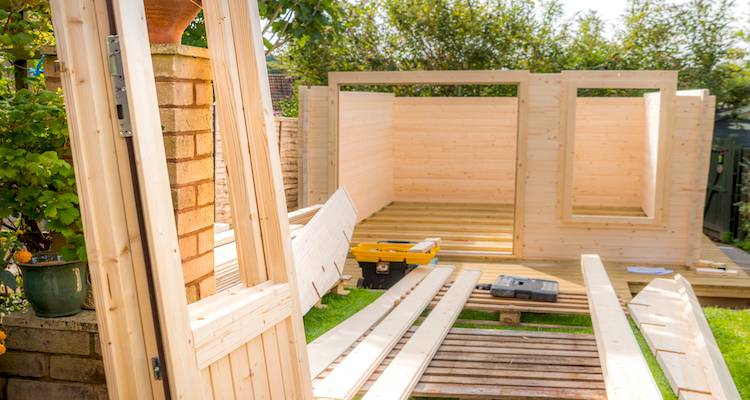
A prefabricated annexe is delivered with all necessary fixtures and is assembled onsite. Typically, a prefabricated granny annexe typically costs between £25,000 and £60,000.
Pros
- ✔ You can design it yourself.
- ✔ Then, make exactly what you require.
Cons
- ✖ It's better to build this type through a company.
Checklist: Hiring a Builder for a New Granny Annexe
Finding a builder will not be the simplest part of your project. Indeed, with a trade shortage resulting in a 20-year high in demand for construction work, finding the right team to take on your project is more difficult than ever.
Once you have a shortlist of builders, it’s always a good idea to ask the contractor some questions before you decide which quote to choose. Here are some questions we recommend you ask:
- ✔ Confirm experience with building annexes
- ✔ Verify qualifications and insurance
- ✔ Request references and examples of builds
- ✔ Get a detailed quote covering all stages
- ✔ Clarify Timelines and Payment Terms
- ✔ Ensure Planning and Building Control Compliance is Included
FAQs
Can a Granny Annexe Be Connected to the Main House Utilities?
Can I Build a Granny Annexe Myself?
You can handle simple tasks like decorating, but hire qualified tradespeople for construction and building regulations approval.






